Silk is considered one of the world's most luxurious fabrics. Silk is produced by silkworms. Silk qualities vary based on the species of silkworm and the type of weave used to create the silk. Understanding the different types of silk can help you choose the best silk for your needs.

Silk is a luxurious fabric used to make everything from evening gowns to bed sheets. It’s the strongest natural textile in the world. Despite its strength, its softness and luminous appearance are the biggest selling points.
Table of Contents
- The Types of Silk
- Types of Silk Fabric
- Charmeuse
- Chiffon
- Crepe silk
- Habotai Silk
- Silk organza
- Dupioni Silk
- Silk Satin
- Silk Taffeta
- Silk Jersey
- Silk Cotton
- Types of Silk Fabric FAQs
The Types of Silk
Silk is made by the silk worm. The worm spins a cocoon made from silk fiber, which is what is used to make silk fabric. There are four main types of silk produced today.
These are:
- Mulberry silk
- Eri silk
- Tasar Silk
- Muga silk
Mulberry Silk
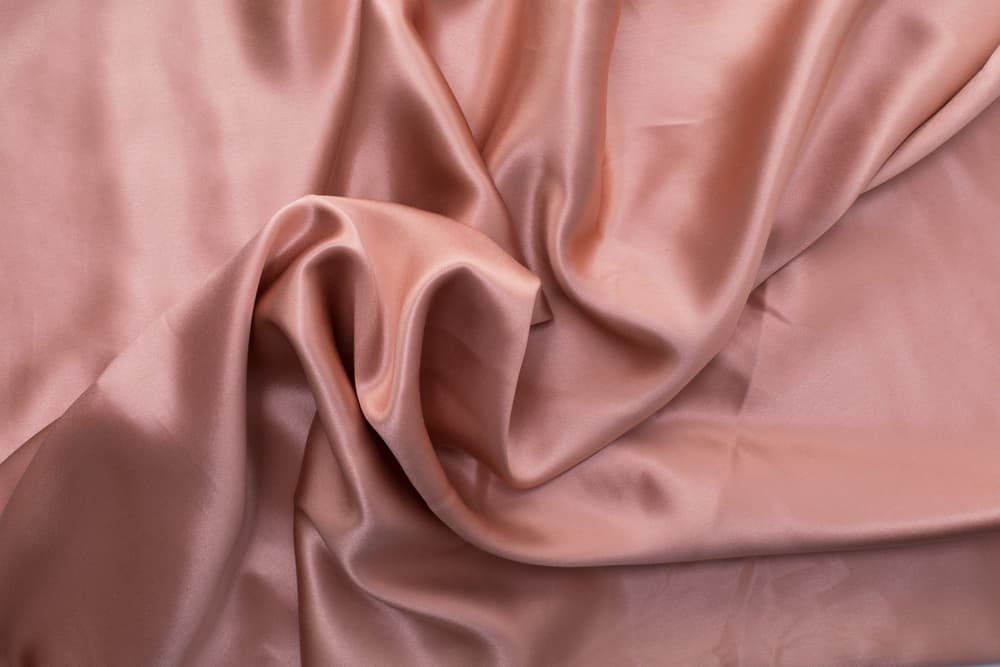
90% of the world’s silk comes from Bombyx mori larvae, which feed on mulberry leaves. This type of silk is called mulberry silk.
Mulberry silk threads are the strongest and smoothest type of silk. In fact, a mulberry silk fiber is stronger than a piece of steel of the same length and diameter.
It can also hold moisture very well. It can hold 1/3 of its weight in water without feeling damp. This means that it won’t mildew or require airing out.
It’s considered the highest quality silk, and is measured in three grades.
Grade A silk is the highest quality raw silk. It is unraveled from the cocoon in long strands. Mulberry silk provides the longest silk strands, which allows for higher quality weaving. Grade B silk is next.
This silk comes from cocoons that didn’t develop properly. Grade C silk actually comes from the inner portion of the cocoon. It often has a yellow color instead of a white sheen, and has shorter fibers.
Eri Silk
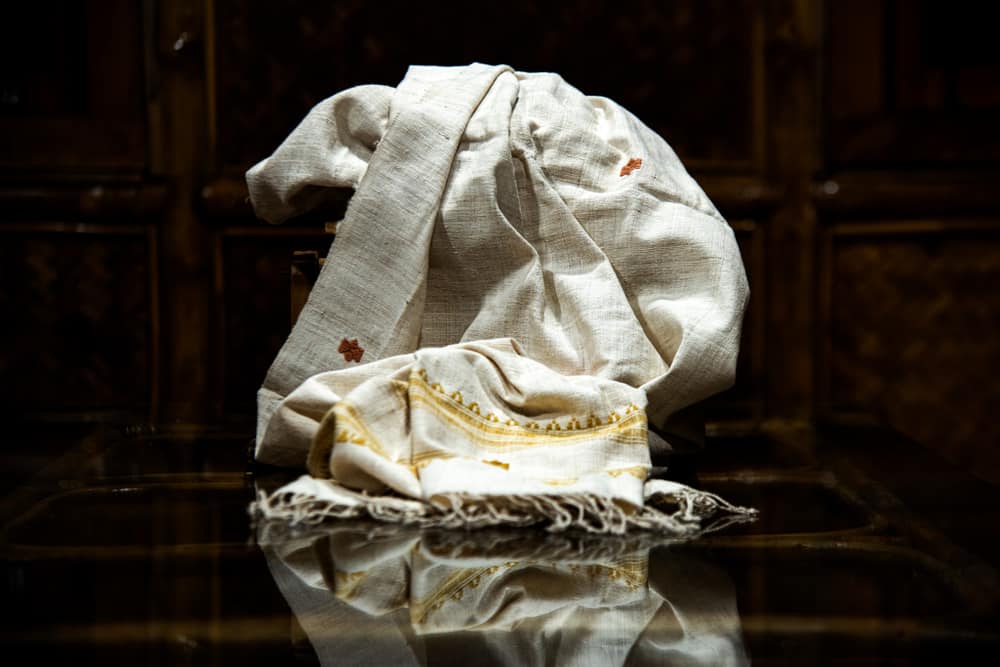
Eri silk is made in India by the Philosamia ricini silkworm. Eri silkworms are raised by villagers and fed castor leaves. When they have grown to full size, they spin a cocoon.
Unlike other types, where the worm is often boiled inside the cocoon, eri silkworms leave a hole in the cocoon to emerge from. It’s often known as peace silk for this reason. It’s particularly prized among Buddhists and vegans because it can be made without harming the animal.
It’s also considered the world’s most sustainable fabric. The worms hatch from eggs and spin their cocoon 50 days later. When the moth emerges from the cocoon, it lays eggs and flies away, continuing the cycle.
Eri silk fabric has a feel of cotton combined with the beauty of silk. Silk pieces are passed down within families, making them heirlooms. It’s said to get better over time, instead of becoming worn like other types of fabric.
Tasar Silk
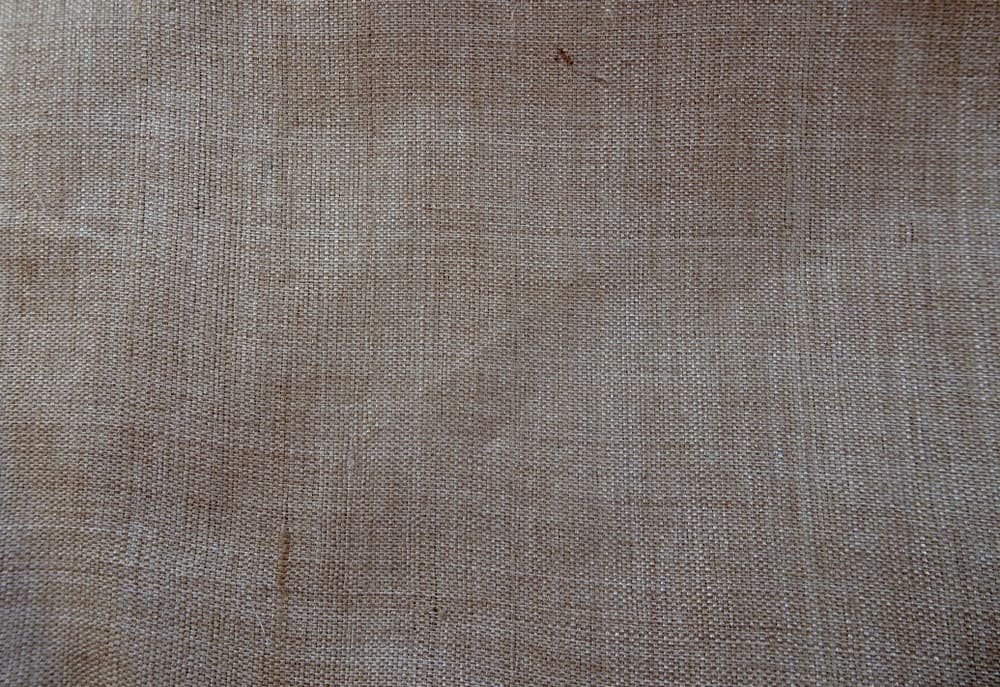
Tasar silk is also known as tussah silk, tussar silk, and silk shantung. Tasar silk is coarser and stronger than mulberry silk. It has a copper color. It’s not typically used in clothing, but it is popular in upholstery.
Tasar silk is made by the Antheraea mylitta silk worm. This type of silk is created by silk worms in the wild, and then the cocoons are harvested. Recent studies suggest that Tasar silk may be superior to mulberry silk in medical applications.
Muga silk
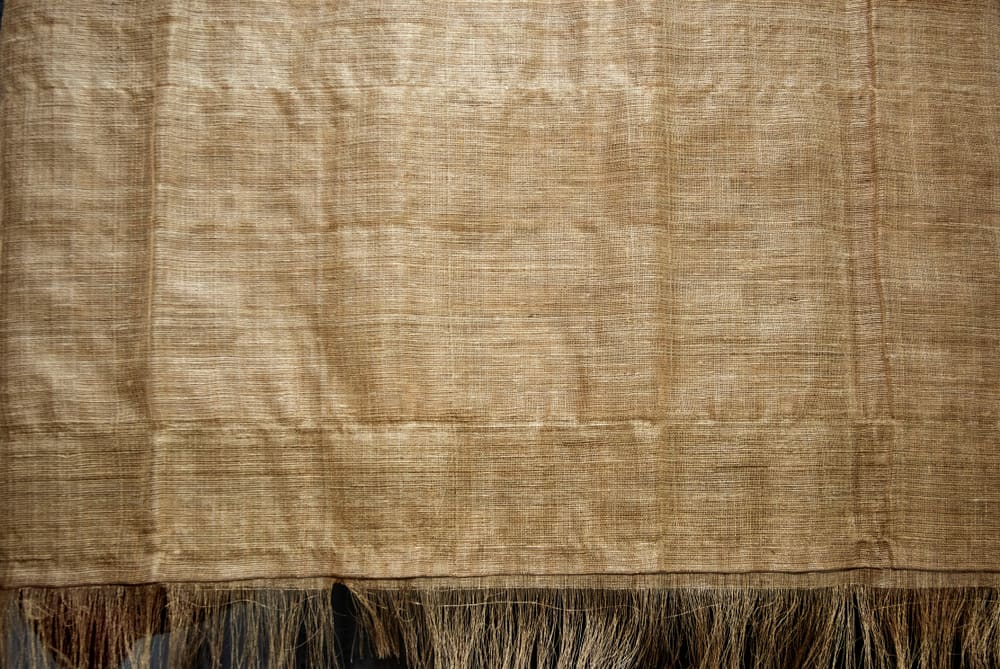
Muga silk is created by the Antheraea assamensis silk worm. The worms are semi-domesticated. They feed on Som and Soalu plants, and raised on trees.
Muga silk is often used to make silk saree, a traditional garmet worn in India. It has a golden color and is very durable. Like Eri silk, it can be passed down from one generation to another.
Types of Silk Fabric
There are many types of silk fabric, because the type of silk worm plays a role, as well as the way the silk is manufactured.
Charmeuse
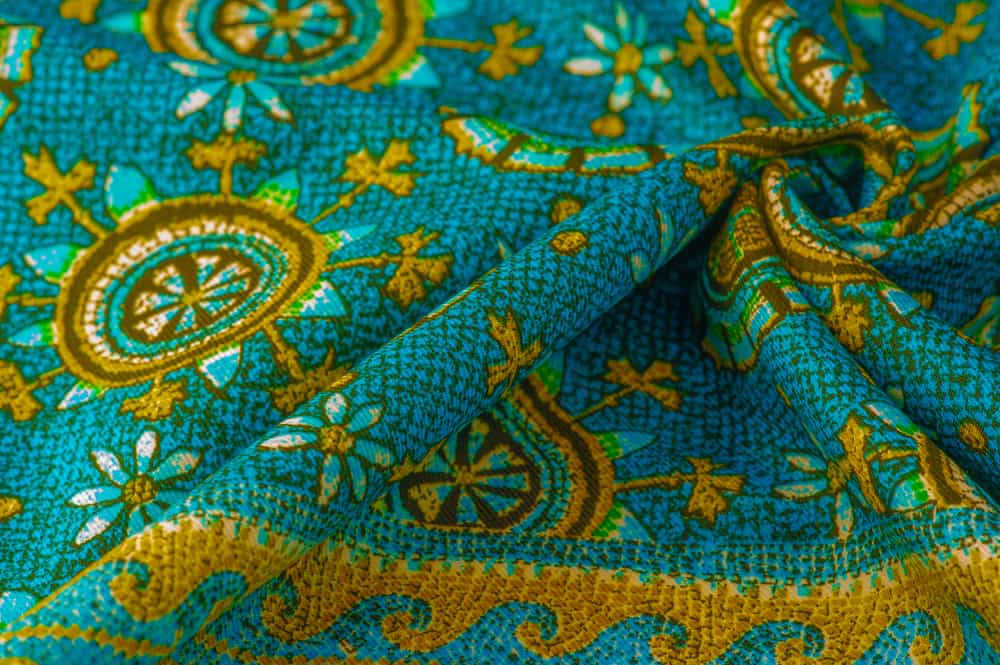
Charmeuse silk has a nice drape. It’s made with a satin weave and is often mistaken with satin. However, charmeuse is shinier than satin. It is shiny on one side and matte on the other. It’s often used for dresses, lingerie, blouses, and scarves.
Chiffon
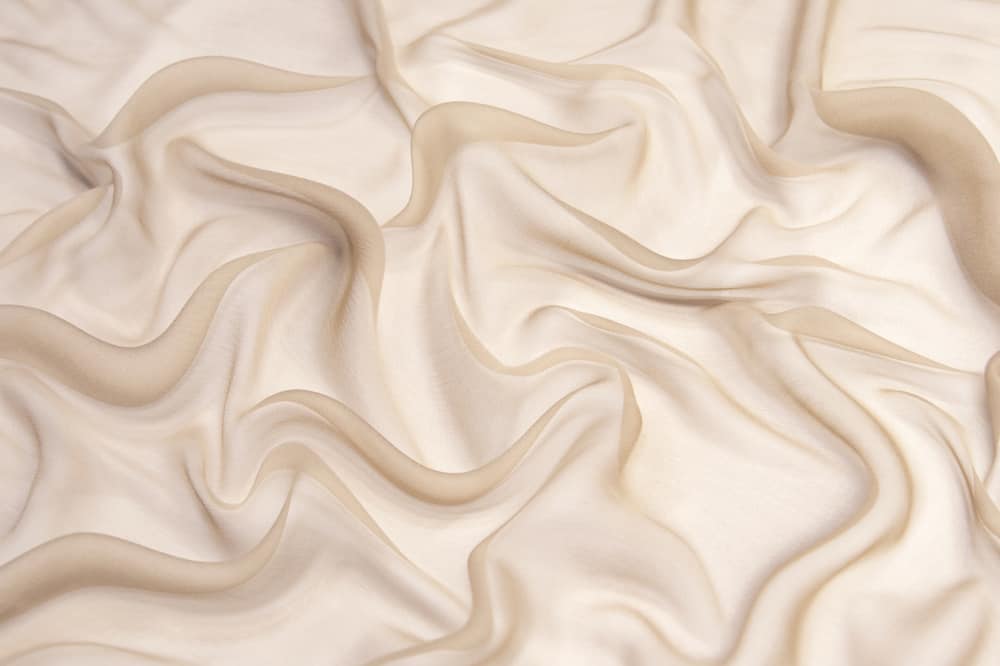
Silk chiffon is made from small twisted silk fiber. It’s lightweight and provides a slight stretch. It’s light and gauzy, with a slightly rough texture. Chiffon is often used in wedding and evening dresses. It works well for creating volume and layering. In addition to dresses, it can be used for blouses and scarves.
Crepe silk

Crepe silk is another lightweight silk fabric. It has a crinkled appearance and can be either rough or soft. It’s often used for summer clothing, including dresses and blouses.
Habotai Silk

Habotai silk, also known as china silk, is originally from Japan. It’s the silk that’s used for lining clothing. It’s also used to make summer clothing, including blouses and lingerie.
It’s very soft and smooth. It is a sheer fabric, but not as sheer as chiffon. It looks beautiful in the sunlight, taking on an iridescent shine. The silk drapes beautifully, making it a great choice for flowing dresses and layers.
Silk organza
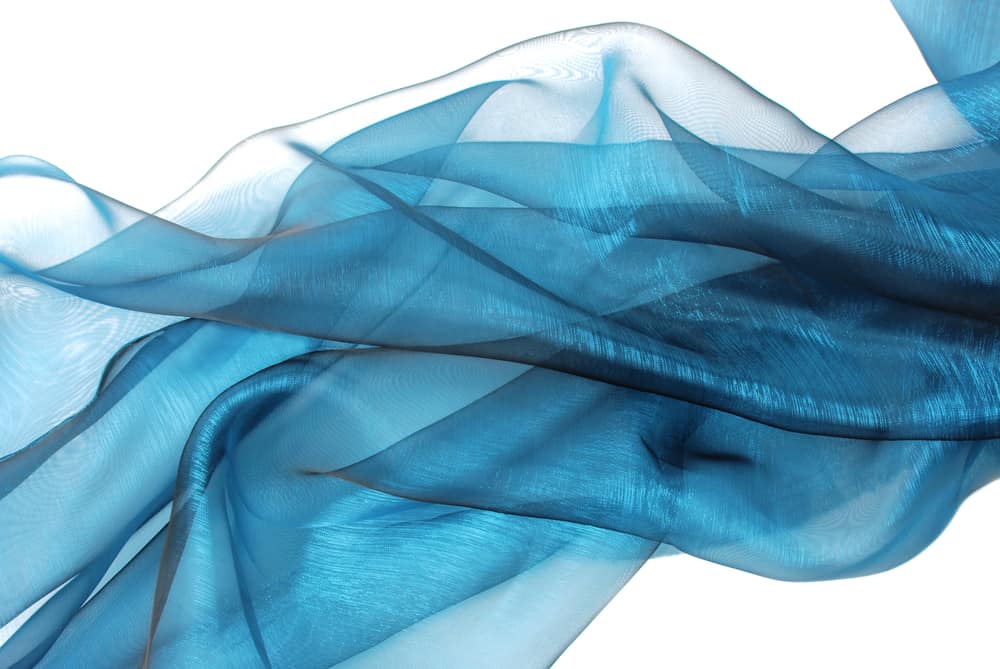
Silk organza is very sheer. It’s made from an open weave silk yarn. It’s very thin, but the threads are highly twisted. This creates an extremely lightweight fabric that maintains its strength.
It’s often used in veils, wedding dresses, and evening dresses. It has a very stiff drape, while still maintaining softness against the skin. This makes it ideal for adding shape or volume to dresses.
Dupioni Silk
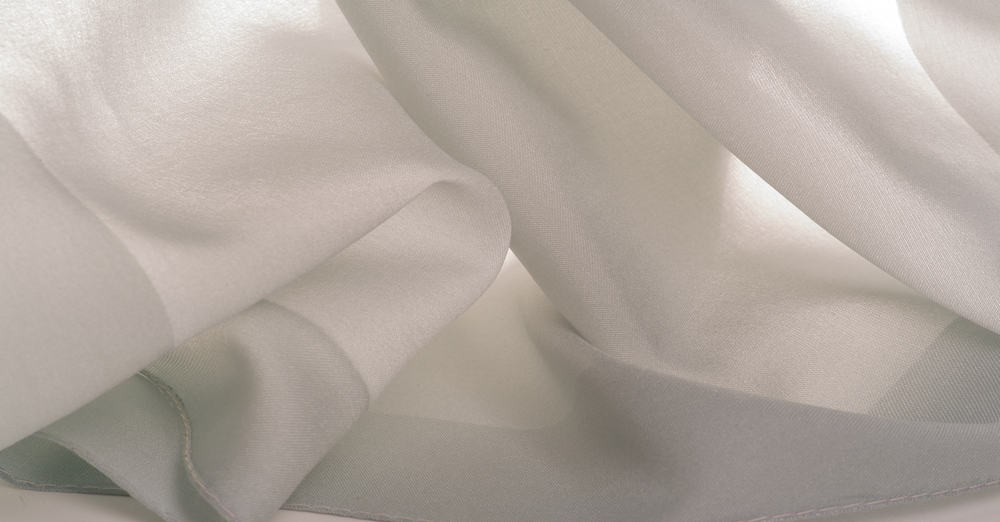
Dupioni silk is also known as dupion silk. Dupioni is a plain weave silk that’s created by using different size silk thread for the weft and warp.
It has a crisp look with an eye-catching texture. It is strong and lustrous. When two different colors of silk thread are used, it has an iridescent appearance.
It sometimes contains black specks because it’s made from raw silk. The black specks are from the cocoon of the silk worm.
It’s used for a wide variety of clothing, including formal dresses, jackets, and bridal gowns.
Silk Satin
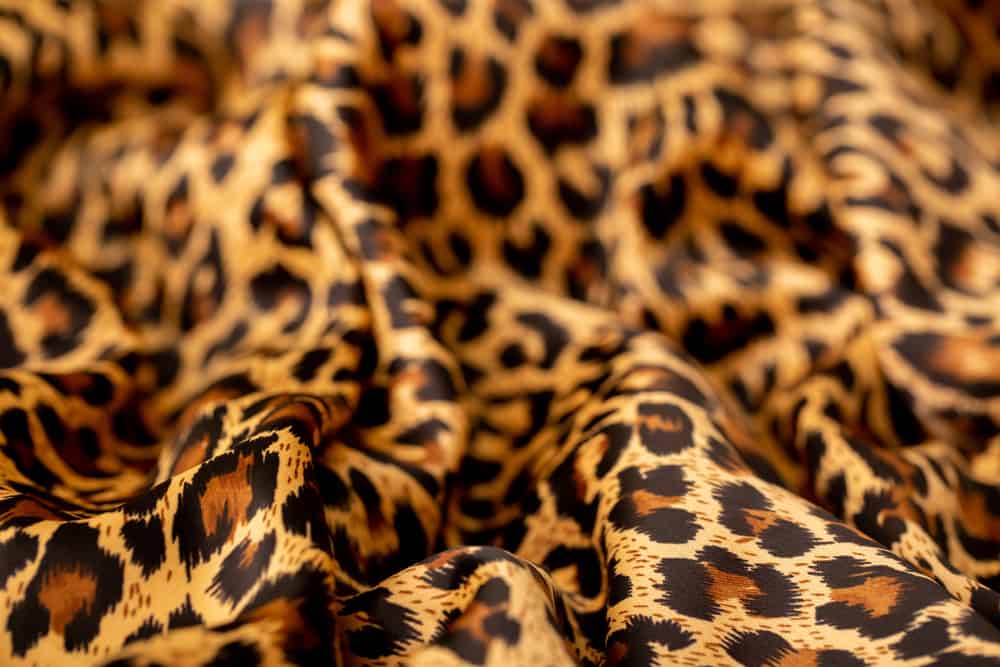
Silk satin is one of the most well-known types of silk fabric. Satin is a type of weave. When silk yarn is used with a satin weave, you have silk satin.
The satin weave floats the warp threads to create a shiny and smooth fabric. It holds color beautifully, and doesn’t hold static electricity as synthetic satins do.
Silk satin has a glossy sheen on one side and a matte finish on the other. It’s used in dresses, formal gowns, blouses, underwear, and bedding. It’s prized for its luxurious look and feel.
Silk Taffeta
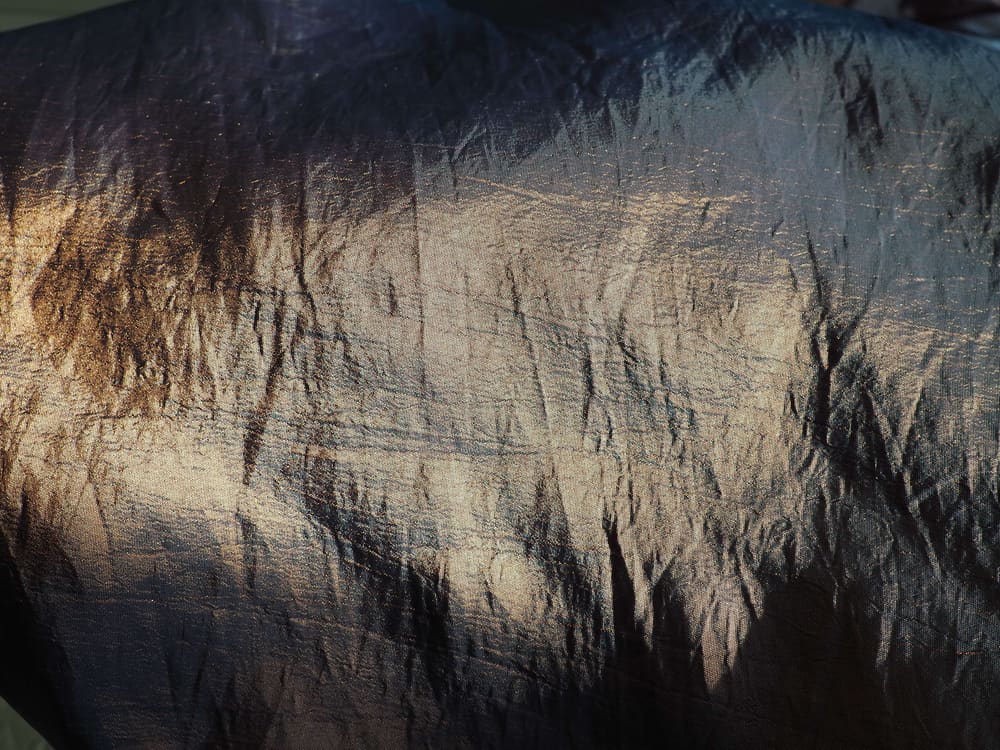
Silk taffeta has a stiff drape and a soft feel. It is used in wedding gowns, formal dresses, suits, lingerie, and blouses. It’s also used for drapes, lampshades, upholstery, and cushions.
Taffeta is crisp and can create a rustling sound with movement. It’s made from highly twisted silk yarn, and has a light sheen.
Silk Jersey
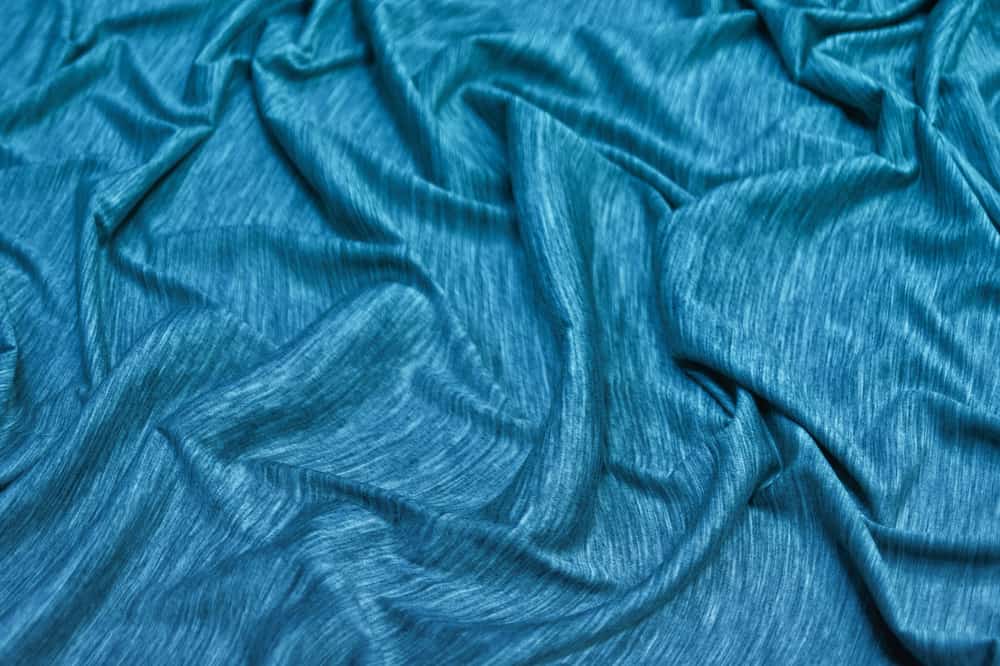
Silk jersey is exceptionally soft and strong. Jersey is a type of knit. The face side has fine ribs, and the reverse has loops. The medium-weight fabric has a beautiful drape.
When used in clothing, it has a feminine appearance. It’s used in dresses, blouses, tunics, wraps, skirts, and lingerie. It’s also used for sheets, because of its softness and durability.
It’s perfect for form-fitting clothing, and silk jersey creates a flowing silhouette. It’s also wrinkle-resistant, which makes it a great choice for travel.
Silk Cotton
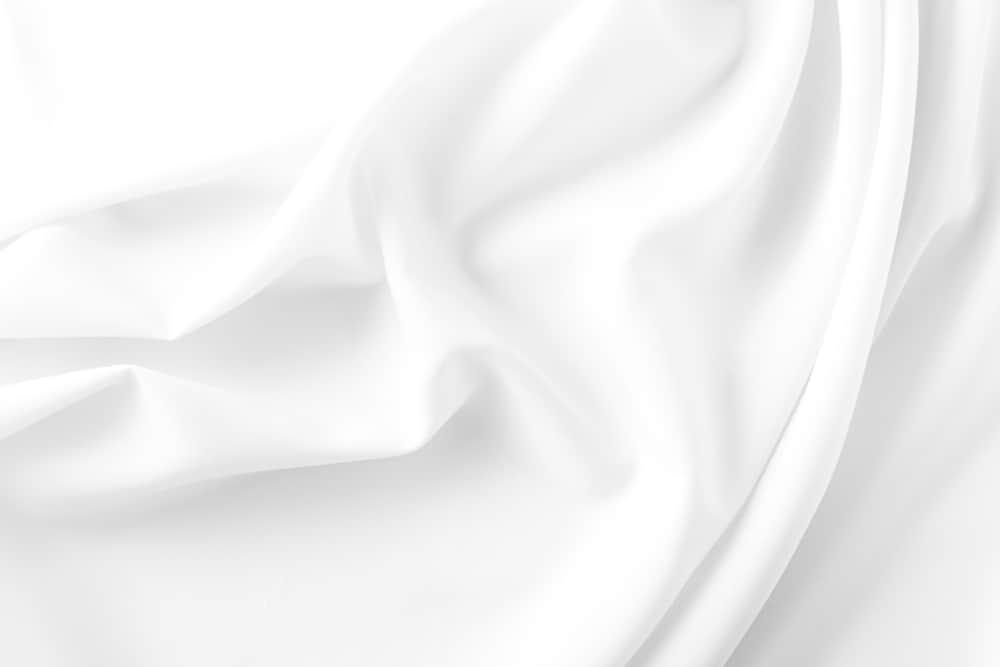
Silk cotton is a blend of cotton and silk thread. The blend gives the benefits of both materials for a high-performance fabric.
It has a silk drape, and feels soft and smooth like silk. It’s generally less expensive than 100% silk fabric. It’s very breathable and perfect for warm weather.
It’s also easier to care for than other types of silk. Unlike most silk fabric, it’s also machine washable. Delicate cycle and cool water is recommended.
Types of Silk Fabric FAQs
Where is silk fabric produced?
Silk fabric is produced in over 60 countries. The largest silk producer is China, followed by India. Uzbekistan, Brazil, Japan, Korea, Thailand and Vietnam account for the majority of silk production outside these two countries.
What is cotton silk made of?
Cotton silk is made from a combination of cotton and silk. Most fabrics are 70% cotton and 30% silk.
What fabric is closest to silk?
The fabric most often used to replace silk is polyester. Viscose is also used as a silk substitute. It’s created from wood pulp. Viscose is a popular silk alternative because it has a similar look and feel.
How does silk fabric impact the environment?
Silk has a mixed reputation. Proponents claim it’s the world’s most sustainable fabric, while others claim that it has the worst environmental impact of any textile. It does require energy to manufacture silk. Domesticated worms must be kept in a climate-controlled environment. Steam or heat is often used to dry the cocoons. Some analysis says that silk uses more water than other textiles, while others say it uses less.
It does require significantly less land to raise and produce, and less chemicals are used. Silk also produces zero waste, unlike cotton and synthetic fabrics. Of course, these impacts are calculated based on industry averages. Some silk manufacturers focus on sustainable practices, so they have a smaller environmental impact.
There’s one more benefit to silk for those with environmental concerns. It’s completely biodegradable. It’s also more likely to be worn for years or passed down from one person to another, which can add sustainability.
Which silk is kimono silk?
Kimonos can be made from a wide variety of fabrics, but silk is the most prized. There are many types of kimono silk, including Rinzu and Omeshi. Silk kimonos can be light or heavy depending on the type of silk and the weave used.
Does silk fabric wrinkle?
Silk wrinkles much less than other fabrics. This makes it a perfect choice for traveling. If you have a last minute get together, silk should look good right off the hanger. If it does wrinkle, the easiest way to remove them is to hang the item in the bathroom and take a shower. The steam from the shower will release the wrinkles. You can also use a steamer to remove wrinkles. You can use the dryer to remove wrinkles as well. Just put the dryer on the no heat setting.
How to recognize a real silk?
The best way to identify real silk is the touch test. Silk should feel very soft. The fabric will warm when you rub it between your fingers, and it will have a slight crunching sound. You can also use the lustre test. Silk will change color and luster when your viewing angle changes.
How do you care for silk?
First, you’ll want to check the label. If it says “dry clean”, then it’s safe to handwash. If it says “dry clean only”, it should only be cleaned by a dry cleaner. Silk fabric may also say “hand wash”. If the label says wash on the gentle cycle, it’s safe to wash in the washing machine. You may choose to wash silk in the washing machine instead of handwashing.
To was silk in the washing machine, place silk items in a mesh delicates bag. Wash on gentle or delicate cycle. To hand-wash, simply run a sink of cool water. Add dishwashing detergent and agitate the clothing for five minutes. Then rinse thoroughly with cool water.
To dry, roll it into a ball. Then pat it with a towel to remove excess water. Lay flat to dry. Do not dry silk in the dryer or wring it out, because it can damage the fibers. Do not use bleach. It’s a good idea to use a detergent designed for silk or delicate clothing.




